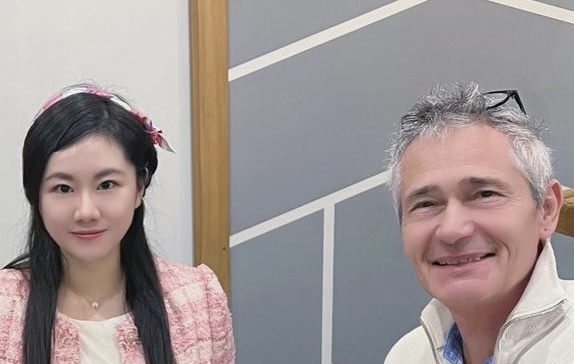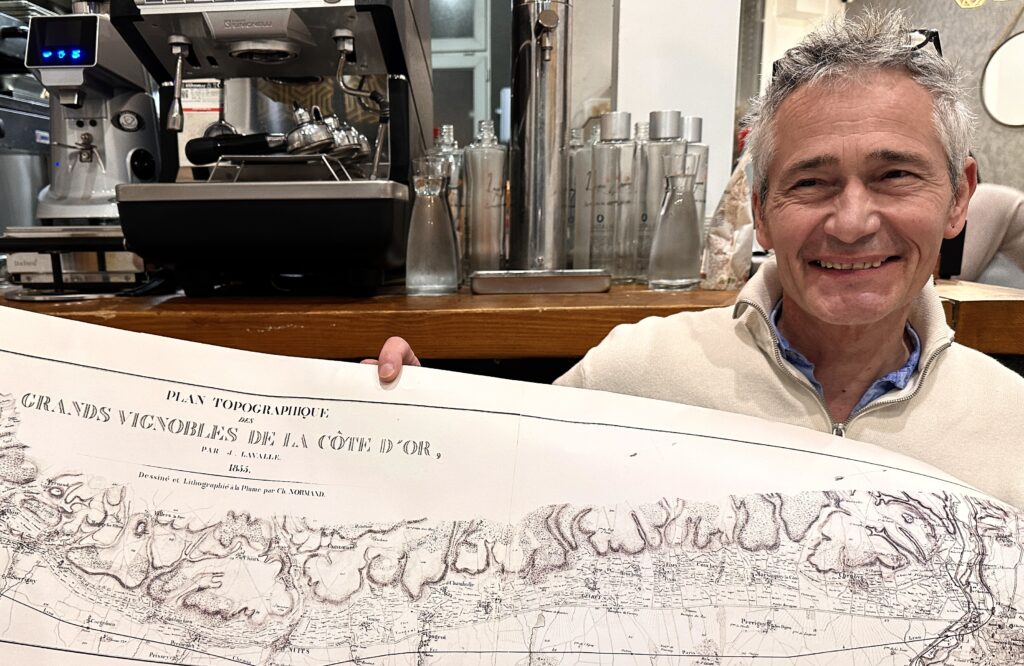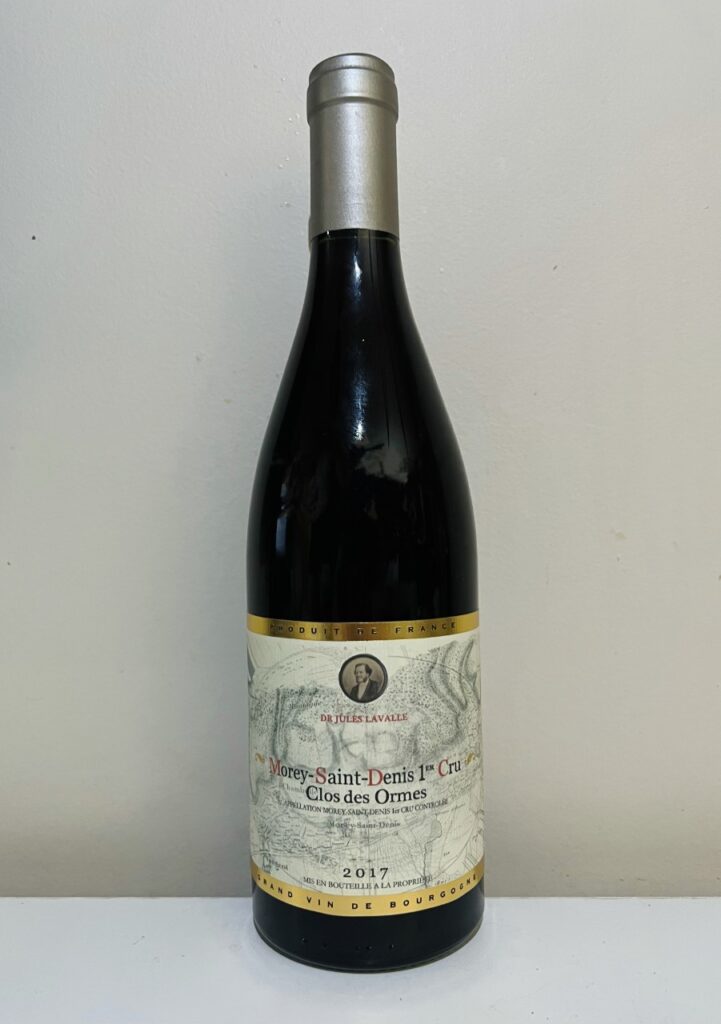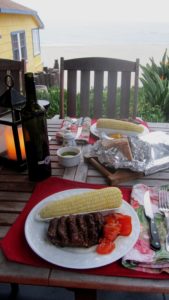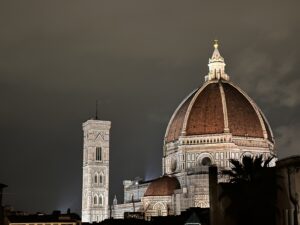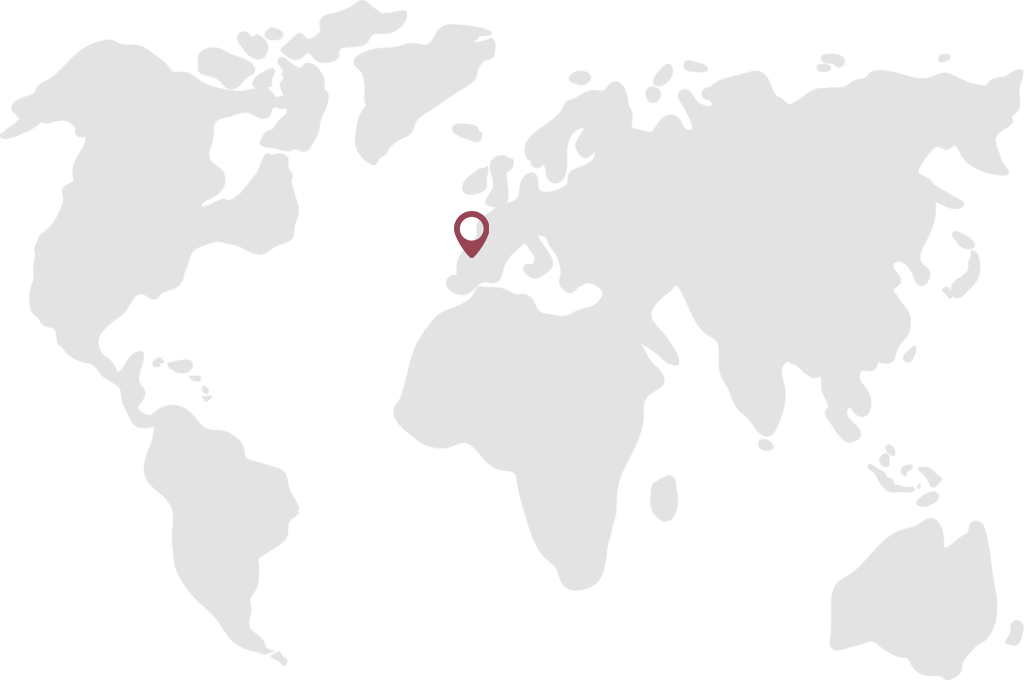Check out my latest Forbes articles here including—the 1855 classification of Burgundy soils, exploring Malaga city in Spain like a local, international sommeliers exploring Bordeaux, and sampling wines from Texas, Virginia, California, France, Italy and Portugal. Also—women winemakers in Tuscany and Bordeaux, and exploring Tuscan wine country by Fiat 500.
Now this Parisian meal.
In mid-November I traveled to Paris. My friend Ting Ding, a Chinese wine exporter who has lived in Paris for years, had invited me to a special dinner.
At the Restaurant Le Layon we met with Olivier de Cayron, a Parisian based artist who is also the great-great-great-grand nephew of Dr. Jules Lavalle, who classified the soils of Burgundy wine region in the year 1855.
They brought a facsimile of the seven foot [two meter] long map that Lavalle had produced. More about Lavalle and in this just published Forbes piece here.
For dinner, we enjoyed one bottle of wine—an excellent Burgundian Grand Cru that both Ting and Olivier now produce (only 400 bottles per year).
DISHES & WINES –
1. WINES AND DISHES.
Wine –
2017 Clos des Ormes Morey-Saint-Denis Premier Cru, Dr. Jules Lavalle Réserve Héritage.
This Burgundy wine includes aromas of florals, raspberries, and blackberries, as well as light but powerful flavors—including sleek red fruit and bright acidity melding with minerality and plums. After minutes in the glass, the juice tastes velvety.
Amuse-Bouche –
Leeks and potato.
Dish One & Dish Two –
Steamed and whipped egg with cream of pumpkin and nuts; Beef with leeks and carrots.
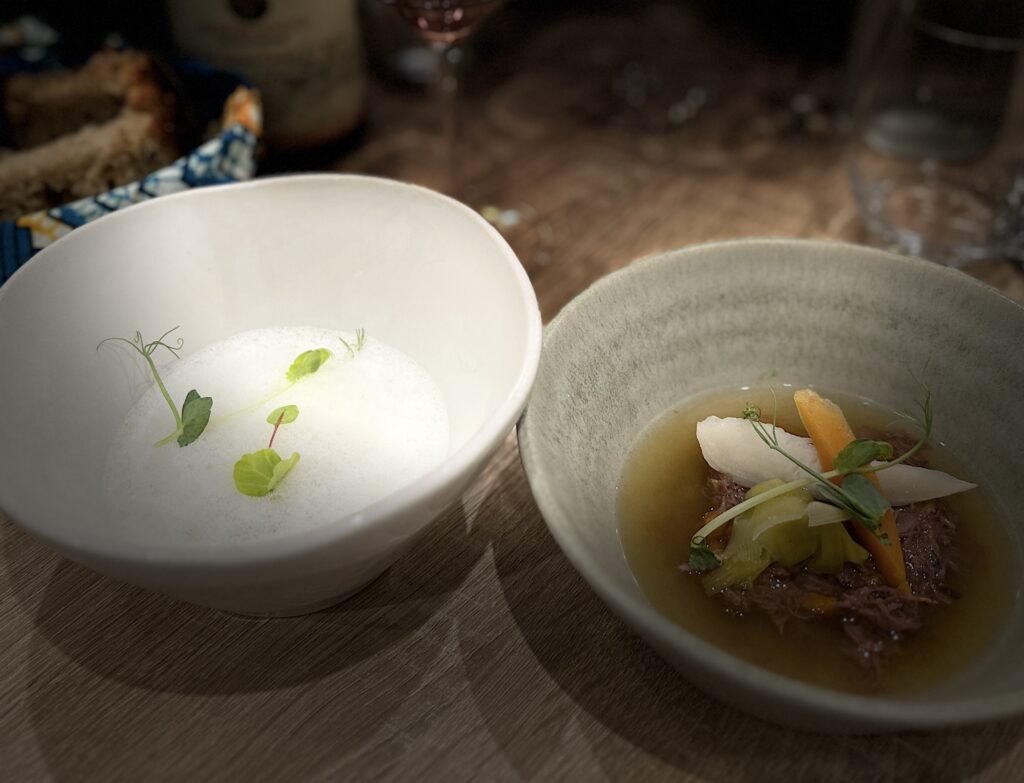
Dish Three –
Maigre fish with spinach and coconut milk.
Dish Four –
Pork with Jerusalem artichoke and boudin noir sauce.
Dessert One –
Wafers and goat cheese cream.
Dessert 2 –
Venezuelan chocolate with white and black cherry creams.
2. SCENE & INSIDER ANGLES.
Paris throbs with life, and the reputation of restaurants shifts with time. A few words of advice:
Listen to locals.
The last time I met Ting she took me for Chinese Fondu in Paris, with baidu alcohol. I’d never heard of either—and both were amazing. Ting was born in China, but because she has spent years living in Paris, she is now a veritable local.
Price and quality are not necessarily related.
Thinking that ‘higher price means better food’ can be folly. As with wine, seek the best quality/price ratio, which will allow you to return to a restaurant more than once during any trip because the location is affordable, enjoyable and because quality food (and wines) are consistently available.
Before the economic crises of 2008, Paris restaurants were generally either inexpensive or overpriced; there was little middle ground. After the crises, the ‘bistronomy’ movement raged, where small restaurants without expensive decor began serving often excellent food at a decent price. There are now many small, modestly decorated restaurants in Paris serving eye-opening fare.
There is more to Paris restaurants than ‘French food.’
As with any city, international cuisine in Paris can be amazing. I’ve had memorable Asian and Middle Eastern food in Paris. French fare such as magret de canard (duck breast) and foie gras is widespread; try sampling both French dishes as well as dishes from other countries.
Think Twice Before Ordering Steak.
The French make many excellent dishes. In general, steak is not one of them. It can be stringy and difficult to chew. This is not true across the board, but in general, if you want meat—you may want to check out duck breast.
Chuck the Guidebook.
Do you want to go to a Parisian restaurant and be surrounded by American backpackers talking about their latest iPhone apps and reading from the same guidebooks? Then avoid the hyped travel guides that end up funnelling visitors to a few crowded restaurants. When these guides were originally written, the authors’ intentions was likely admirable. But after a restaurant becomes well publicized, queues form and the service can turn harried and impersonal.
Same with wine bars. Check out my post written 10 years ago titled Skip The Wine Bars of Paris.

